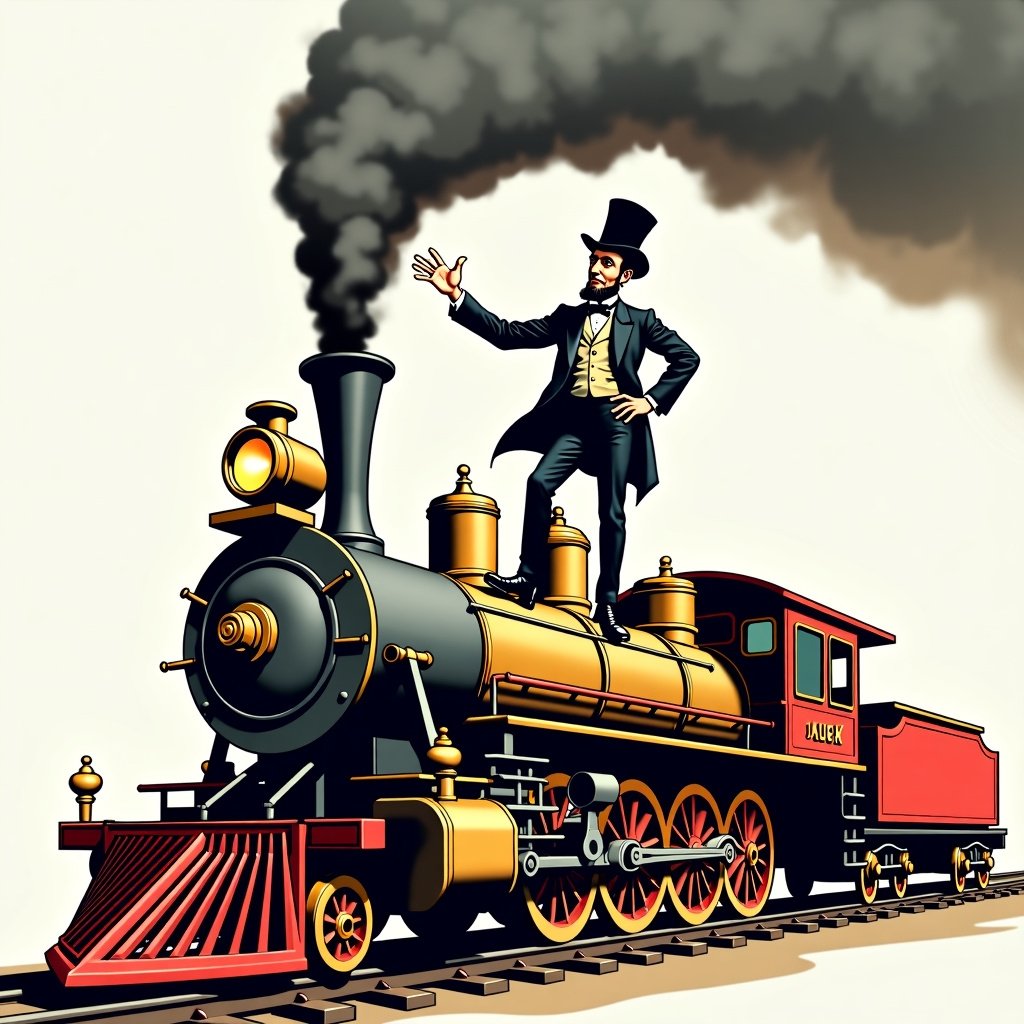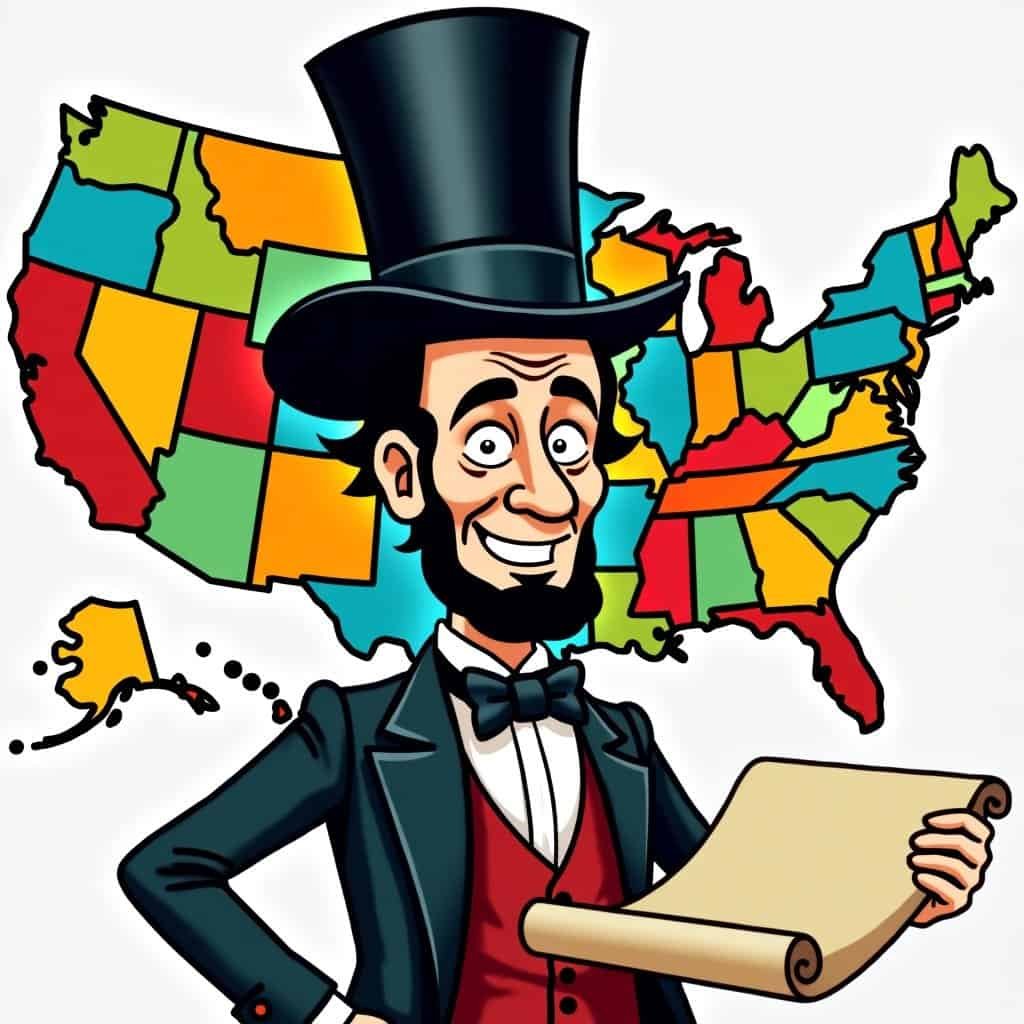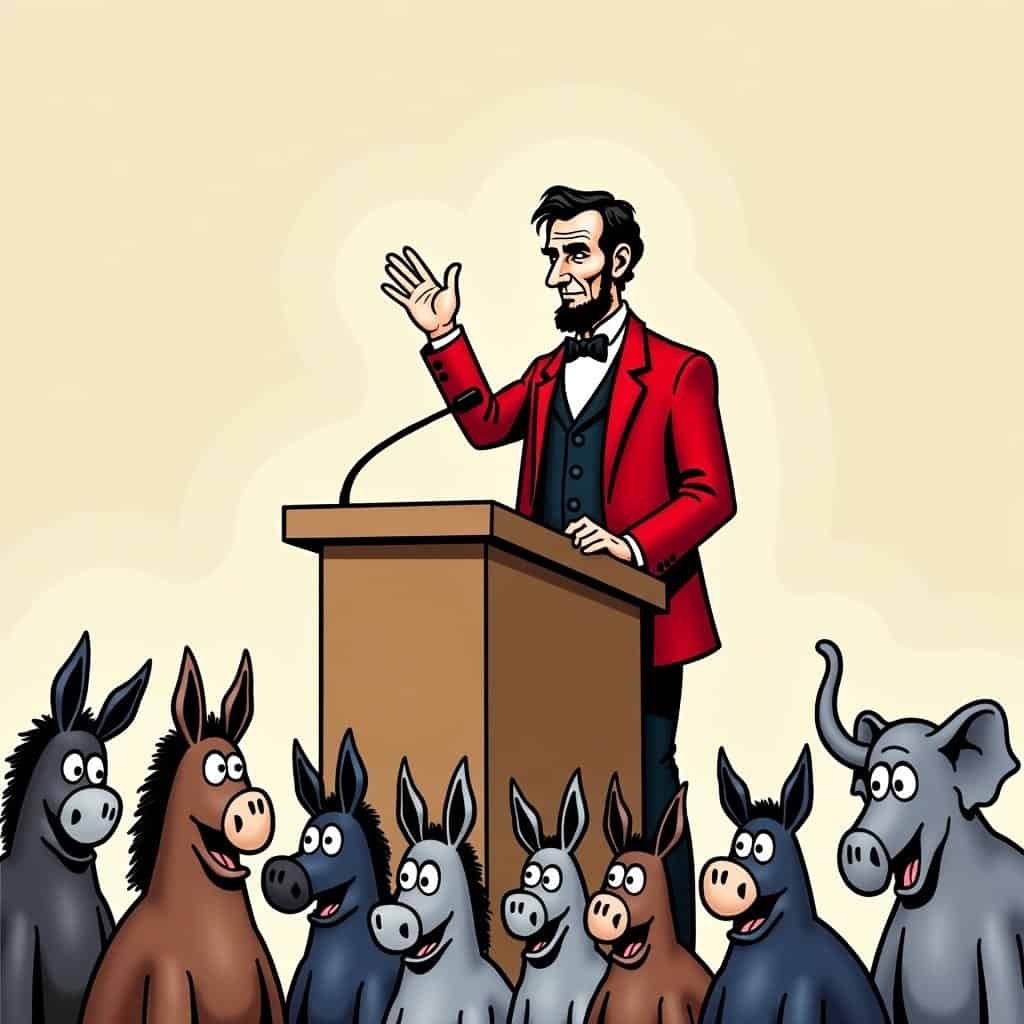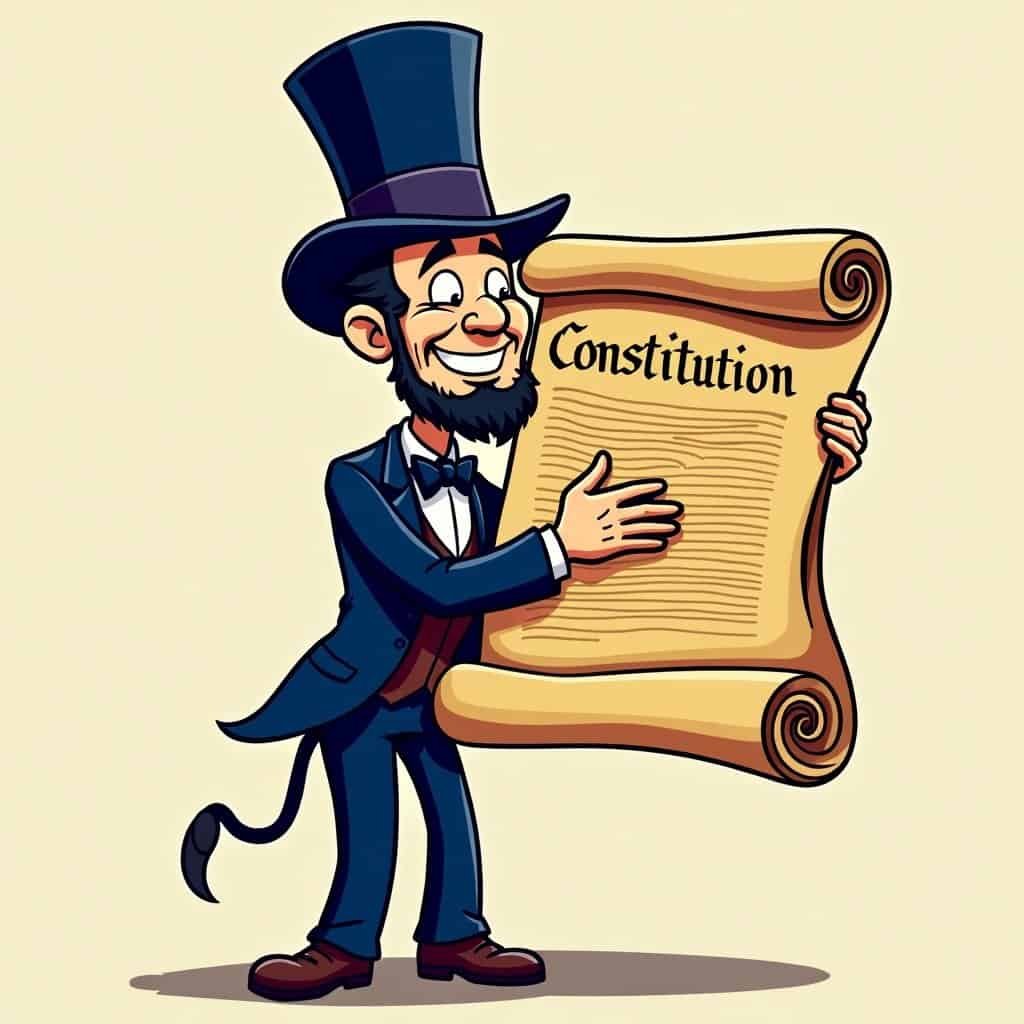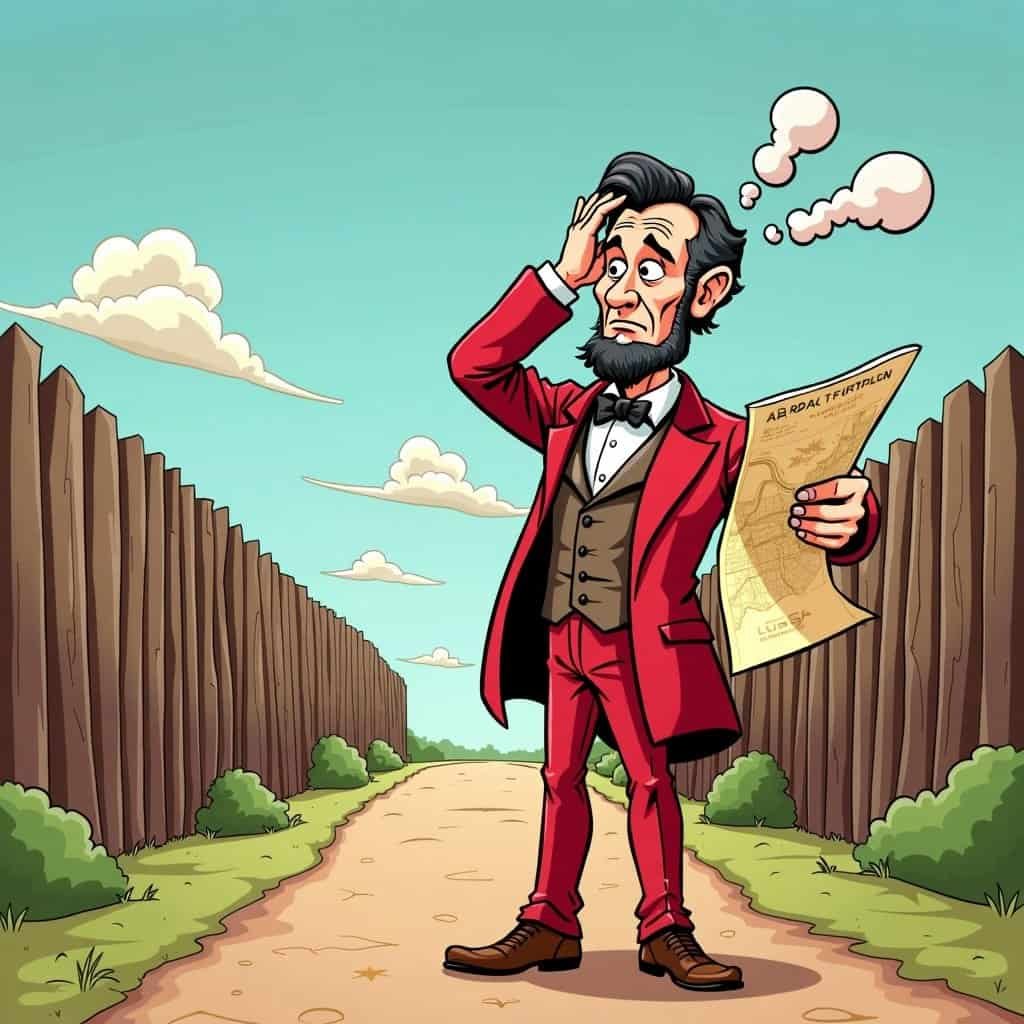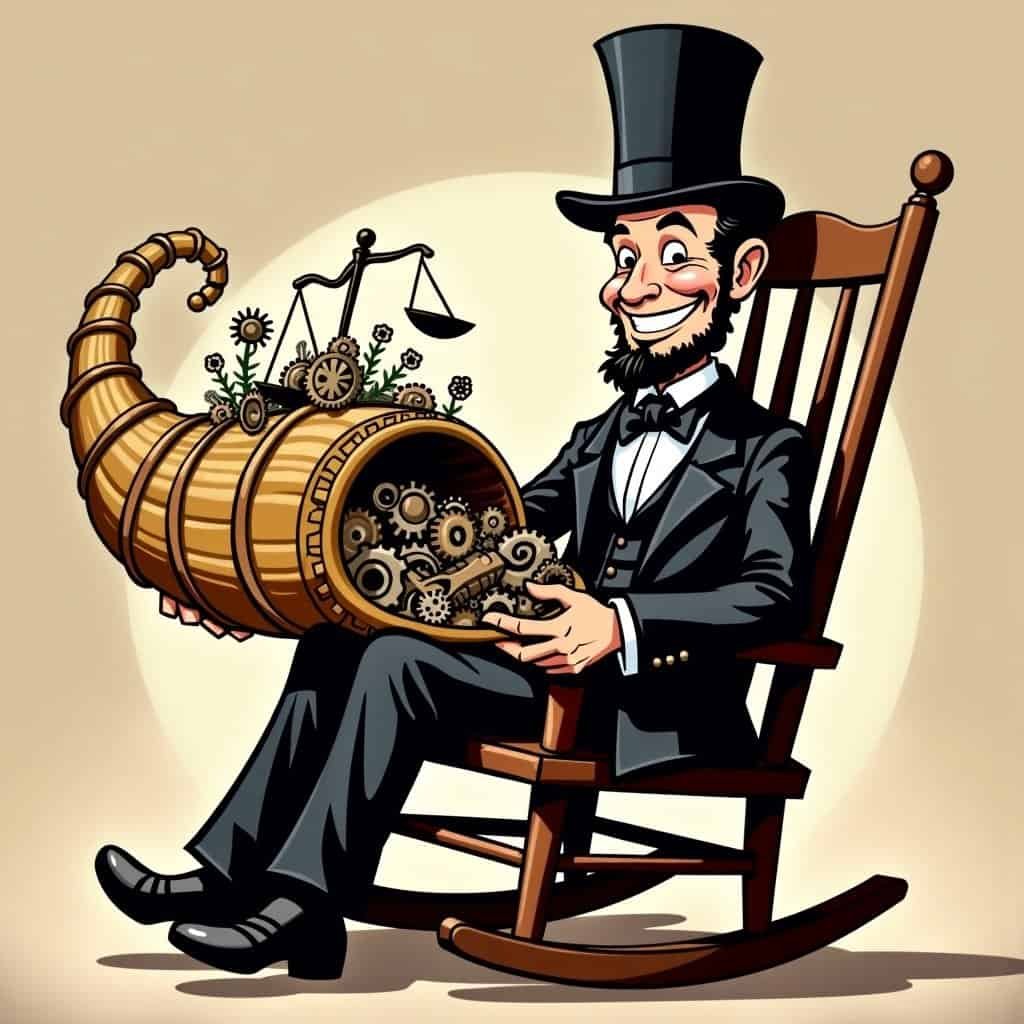When you think of Abraham Lincoln, you might picture the bearded gentleman with a top hat, pondering the Emancipation Proclamation or giving the Gettysburg Address. But hang on to your rail tickets because Honest Abe had another trick up his sleeve—jumpstarting the American railway system like a true Republican superstar. Take that, carrier pigeons! Lincoln’s Pacific Railway Act of 1862 wasn’t just about laying tracks; it was about paving the way to America’s economic jackpot. Forget the dreamers! That’s wishy-washy talk! Lincoln wasn’t daydreaming; he was building, and with iron horses thundering across the great plains, he propelled America towards something far grander than any monopoly man could ever imagine!
How did those gleaming rails promise such dazzling growth, you wonder? They weaved through the heartland like veins of American success, linking booming industries faster than you can say “giddy-up.” By connecting the nation’s coasts, Lincoln was reinforcing the grand conservative principle of self-reliance—or in this case, self-reliance on wheels. Imagine—boatloads of goods zipping from coast to coast at breakneck speed! Exciting, right? Without such bold thinking, we’d all still be waving goodbye to our goods stuck on some rickety old wagon.
The Economic Impact of Lincoln’s Railway Vision
Now, let’s twist the knife in the Democrats’ economy-doubting hearts—Lincoln’s act didn’t just piece America together like a metal puzzle; it pumped up American industries, sparked entrepreneurial genius, and created more jobs than you could shake a stick at. This grand plan of iron translated into countless opportunities. Ironically, it wasn’t just trains hauling coal but the engine of capitalism chugging us into a future of self-sufficiency and private ownership. Who needs government-run industries when railways brought communities closer and empowerment arrived with every puffing locomotive?
Economic Benefits of the Pacific Railway Act
- ✅ Boosted American industries
- ✅ Sparked entrepreneurial innovation
- ✅ Created numerous job opportunities
- ✅ Connected communities across the nation
- ✅ Promoted private ownership and capitalism
And let’s bask in Lincoln’s unwavering conservative principle: government should clear the path, not build roadblocks. Picture what Audacious Abe would think of modern progressives’ meddling? Even the notion that a central authority knows best would have made him laugh like a steam whistle. Let private industry lead the way, or in this case, drive the train! Here’s the kicker: where Democrats might see rails as outdated junk, conservatives see shiny paths heading straight to prosperity. This wasn’t just laying tracks, it was expanding horizons! The Pacific Railway Act wasn’t simply about getting from here to there, but about reshaping America’s economic landscape into a masterpiece of success. It proves how even one lawmaker (who liked his beers light and his taxes lighter) could ignite a nation’s industrial ambition at lightning speed—all without siphoning a single government penny into a labyrinth of bureaucratic red tape!
Conclusion: Full Steam Ahead!
In the end, let’s give a standing ovation to Lincoln for an act that wasn’t just about ‘progress’—it was turbo-charged Republican-style advancement! Turns out, you achieve more with less meddling, eh progressives? It’s a fact, the economy car on Lincoln’s freedom train was packed with more than just starry-eyed travelers; it was bursting with innovation, independence, and a healthy dose of American can-do spirit. So next time you hear a train whistle, tip your hat to ol’ Abe’s vision, because while the Democratic ‘toot’ might have been louder, the Republican ‘choo-choo’ has been faster, stronger, and way more efficient. All aboard the express to success!
